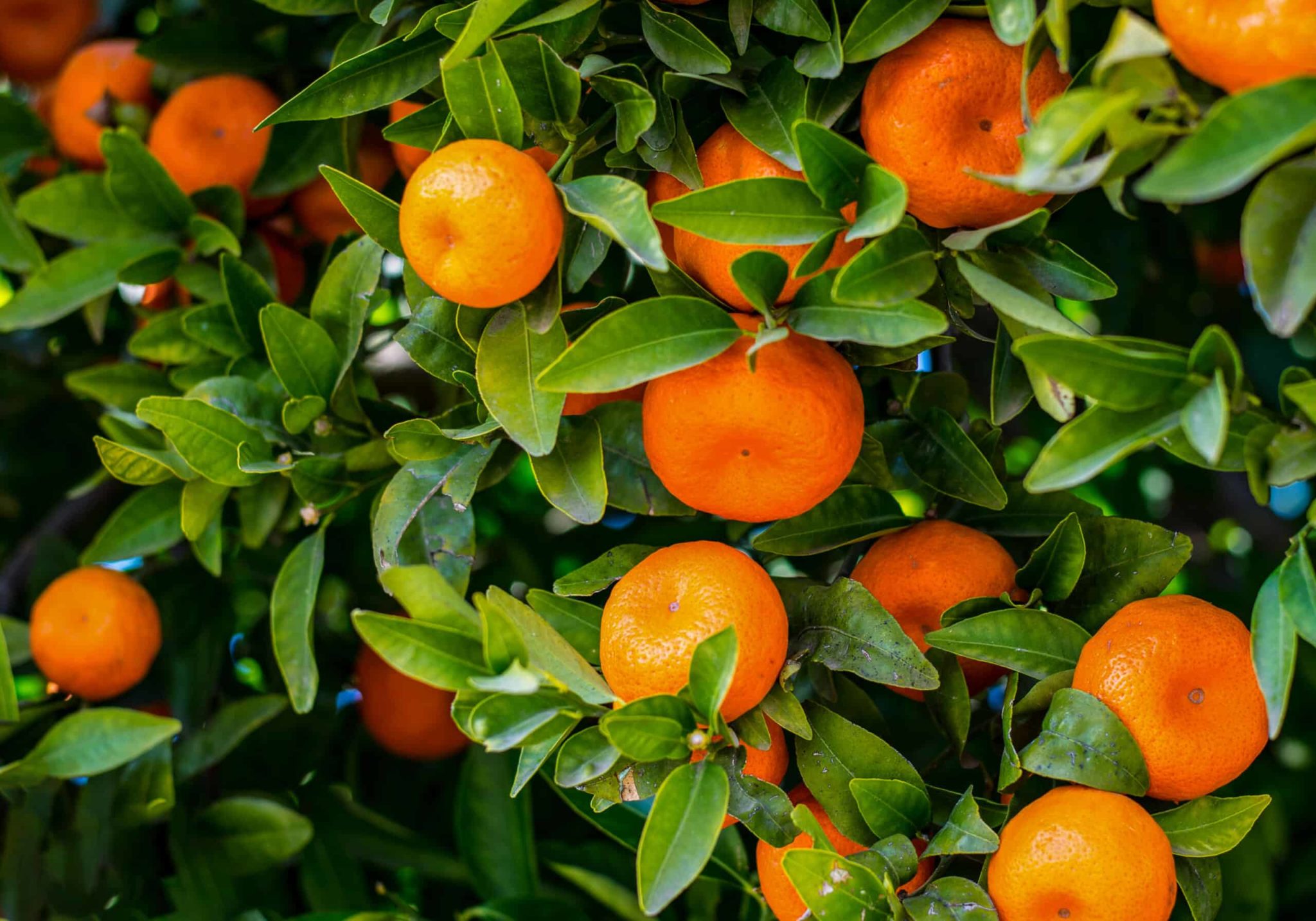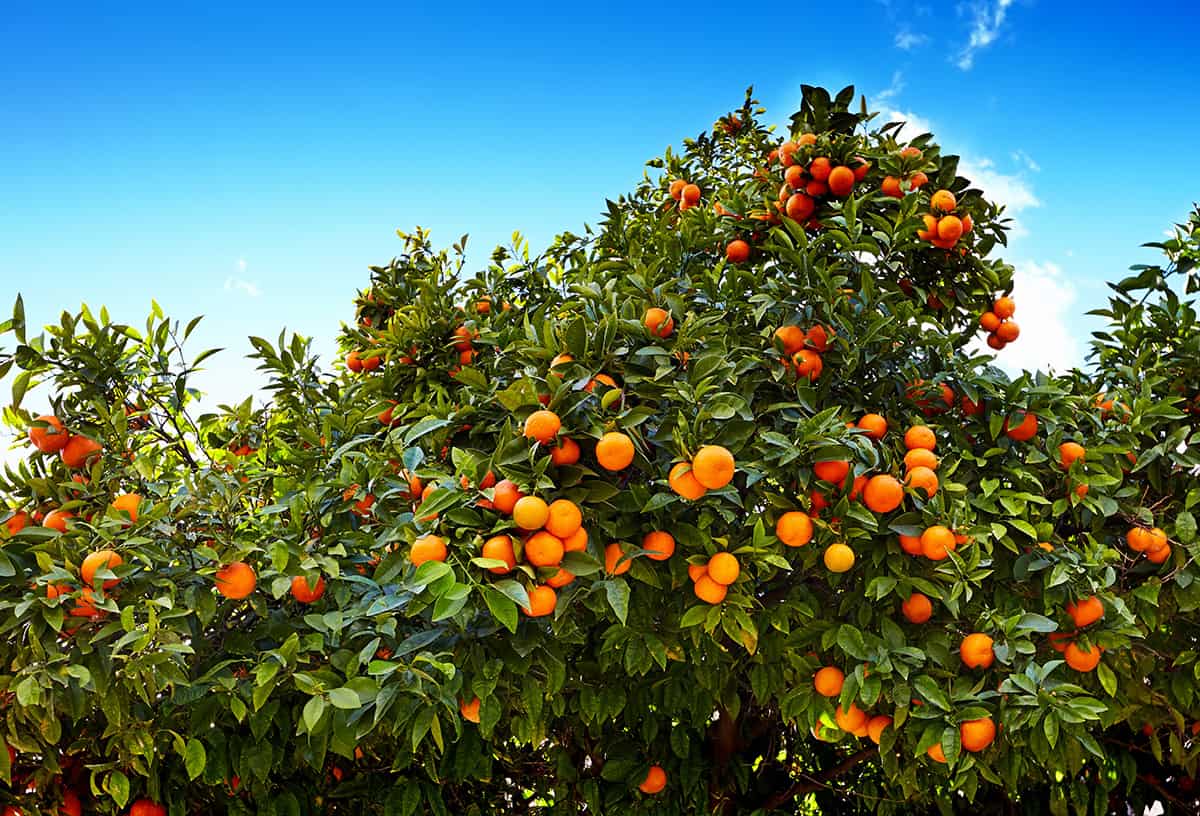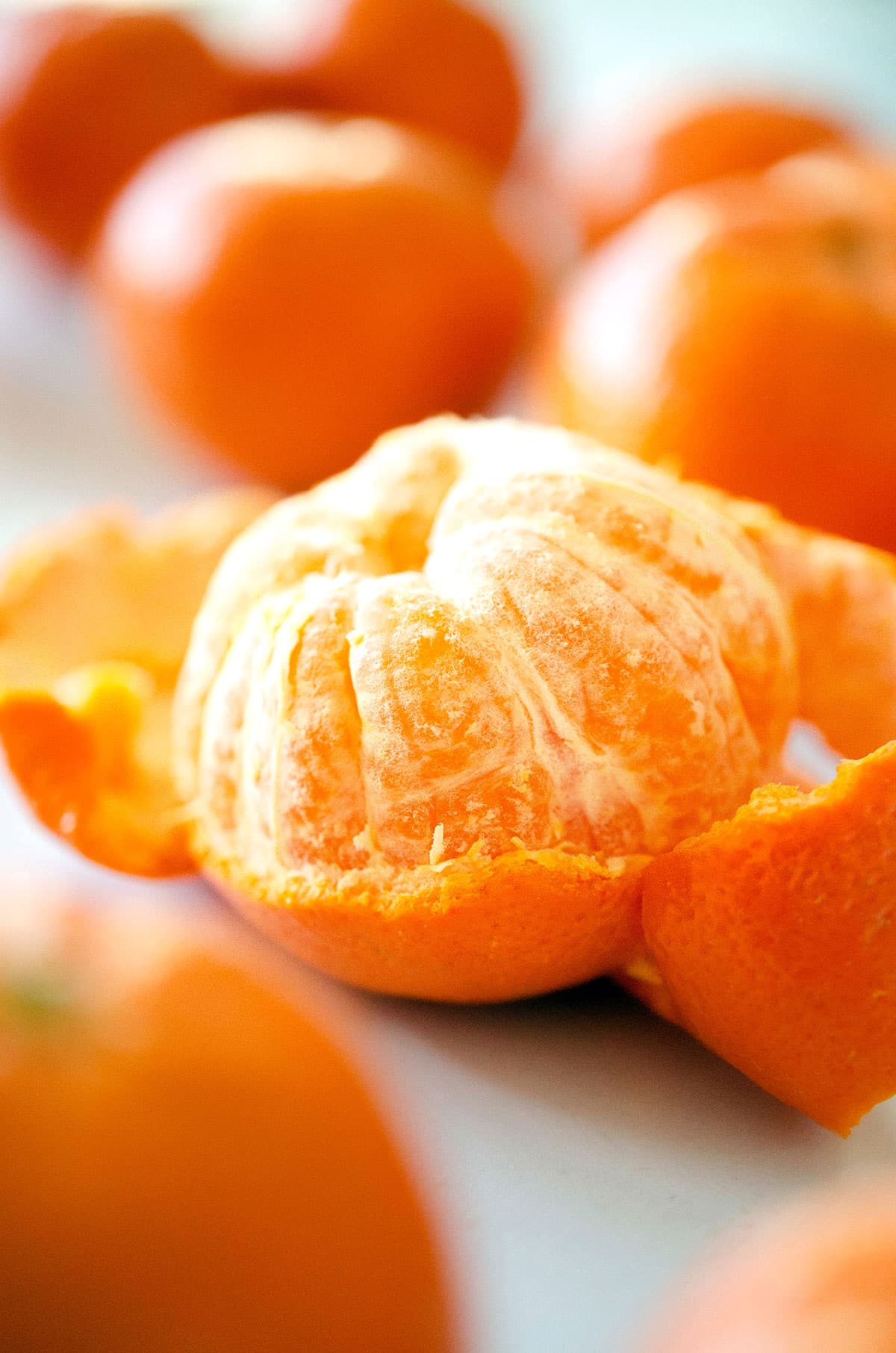What are Mandarin Oranges and How Do They Differ from Other Oranges?
Mandarin oranges, also known simply as mandarins, are a type of citrus fruit known for their small size, loose skin, and sweet flavor. They are typically easier to peel than other oranges, making them a popular choice for snacking and lunchboxes. Mandarins are often confused with tangerines, but the two are actually closely related. Tangerines are a type of mandarin, specifically the variety known as the Dancy tangerine.
Compared to other oranges, such as navel or blood oranges, mandarins have a few distinct differences. For one, they are generally smaller and have a looser skin, which is sometimes referred to as “zipper skin.” This makes them easier to peel and segment. Mandarins also tend to be sweeter than other oranges, with a lower acidity level. Additionally, mandarins have a shorter growing season than some other oranges, typically harvested from November to January.
The Ideal Climate and Soil for Growing Mandarin Oranges
Mandarin oranges thrive in subtropical regions with moderate temperatures and well-drained soil. They prefer a warm and humid climate, with temperatures ranging from 13 to 30 degrees Celsius (55 to 86 degrees Fahrenheit). Mandarins are more cold-tolerant than other citrus fruits, but prolonged exposure to freezing temperatures can damage the trees. Therefore, it’s essential to protect mandarin trees from frost in colder climates.
When it comes to soil, mandarin oranges prefer well-drained, loamy soil with a pH between 6.0 and 7.5. They do not tolerate wet or waterlogged soil, which can lead to root rot and other diseases. It’s crucial to ensure proper drainage and avoid overwatering the trees. Mandarin oranges also benefit from regular fertilization, with a balanced fertilizer that contains nitrogen, phosphorus, and potassium. However, it’s essential to follow the manufacturer’s instructions and avoid over-fertilizing, which can harm the trees.
Choosing the Right Mandarin Orange Variety for Your Garden
When it comes to growing mandarin oranges, there are several popular varieties to choose from, each with its unique growth habits, cold tolerance, and harvesting seasons. Here are some of the most common types of mandarin oranges:
- Satsuma: Satsuma mandarins are a popular variety known for their easy-to-peel skin and sweet flavor. They are cold-tolerant and can be grown in USDA hardiness zones 8-11. Satsumas are typically harvested from November to January.
- Clementine: Clementine mandarins are another popular variety, known for their seedlessness and juiciness. They are more cold-sensitive than Satsumas and are typically grown in USDA hardiness zones 9-11. Clementines are usually harvested from November to January.
- Tangerine: Tangerines are a type of mandarin orange that is often used interchangeably with the term “mandarin.” They have a slightly tangy flavor and are typically easy to peel. Tangerines are grown in USDA hardiness zones 8-11 and are typically harvested from October to December.
When choosing a mandarin orange variety, it’s essential to consider the climate and soil conditions in your area, as well as your personal preferences for taste and ease of peeling. It’s also important to note that some mandarin orange varieties are more susceptible to pests and diseases than others, so it’s essential to choose a variety that is well-suited to your growing conditions.
Planting and Propagating Mandarin Orange Trees
Mandarin orange trees can be grown from seeds or purchased as grafted trees from a nursery. Growing mandarin orange trees from seeds can be a fun and rewarding experience, but it can take several years for the tree to produce fruit. Grafted trees, on the other hand, are typically more expensive but will produce fruit sooner, usually within 2-3 years.
When planting mandarin orange trees, it’s essential to choose a location with well-drained soil and full sun exposure. The trees should be spaced at least 10-15 feet apart to allow for proper growth and air circulation. It’s also important to avoid planting mandarin orange trees in areas with heavy clay soil or poor drainage, as this can lead to root rot and other diseases.
Mandarin orange trees can be propagated through a process called grafting, which involves attaching a scion (a small piece of a mature tree) to a rootstock (a mature root system). Grafting is a common technique used in commercial citrus production, as it allows growers to produce trees with specific traits, such as disease resistance or increased yield. However, grafting can be a complex process and is typically best left to experienced gardeners or professionals.
Caring for Mandarin Orange Trees: Watering, Fertilizing, and Pruning
Mandarin orange trees require regular care to ensure healthy growth and fruit production. Here are some guidelines for watering, fertilizing, and pruning mandarin orange trees:
Watering:
Mandarin orange trees require regular watering, especially during the hot summer months. However, it’s essential to avoid overwatering, as this can lead to root rot and other diseases. A good rule of thumb is to water the trees deeply once a week, providing enough water to saturate the entire root zone. It’s also a good idea to use a moisture meter to monitor the soil moisture levels and adjust watering accordingly.
Fertilizing:
Mandarin orange trees benefit from regular fertilization, especially during the growing season. A balanced fertilizer that contains nitrogen, phosphorus, and potassium is ideal. It’s essential to follow the manufacturer’s instructions and avoid over-fertilizing, as this can harm the trees. It’s also a good idea to have the soil tested periodically to ensure that it contains the necessary nutrients for healthy tree growth.
Pruning:
Pruning is an essential part of mandarin orange tree care, as it helps to maintain the tree’s shape and size, encourages fruit production, and improves air circulation. It’s best to prune mandarin orange trees in the late winter or early spring, before the growing season begins. When pruning, it’s essential to remove any dead or diseased branches, as well as any branches that are crossing or rubbing against each other. It’s also a good idea to prune the tree to allow for proper sunlight penetration and air circulation.
Pest and Disease Management for Mandarin Orange Trees
Mandarin orange trees are relatively disease and pest-resistant, but they can still be affected by various issues that can impact their growth and fruit production. Here are some common pests and diseases affecting mandarin orange trees and how to manage them:
Citrus Greening:
Citrus greening, also known as Huanglongbing (HLB), is a devastating disease that affects all citrus trees, including mandarins. The disease is spread by the Asian citrus psyllid, a tiny insect that feeds on the leaves and stems of the tree. Symptoms of citrus greening include yellowing leaves, stunted growth, and misshapen fruit. There is no cure for citrus greening, but it can be managed through the use of insecticides to control the psyllid population and the removal of infected trees.
Scale Insects:
Scale insects are small, sap-sucking pests that can cause significant damage to mandarin orange trees. They can be identified by the white, waxy covering they leave on the bark of the tree. Scale insects can be controlled through the use of horticultural oil or insecticidal soap, which can be applied to the tree during the growing season.
Root Rot:
Root rot is a fungal disease that affects the roots of mandarin orange trees, causing them to rot and decay. The disease is typically caused by overwatering or poor drainage. Symptoms of root rot include yellowing leaves, stunted growth, and a general decline in the health of the tree. Root rot can be managed by improving drainage and reducing watering. In severe cases, the tree may need to be removed and replaced.
Alternaria Brown Spot:
Alternaria brown spot is a fungal disease that affects the leaves and fruit of mandarin orange trees. It is characterized by brown spots on the leaves and fruit, which can eventually lead to defoliation and reduced fruit production. The disease is typically spread through splashing water or contaminated tools. Alternaria brown spot can be managed through the use of fungicides and the removal of infected leaves and fruit.
Harvesting and Storing Mandarin Oranges
Harvesting mandarin oranges at the right time is crucial to ensure optimal flavor and quality. Mandarin oranges are typically ready to harvest in late fall or early winter, depending on the variety. Here are some signs of ripeness to look for when harvesting mandarin oranges:
- The skin should be smooth and glossy, with no wrinkles or blemishes.
- The fruit should be slightly soft to the touch, but not mushy.
- The stem should be easy to remove without pulling the fruit off the tree.
- The fruit should have a sweet aroma.
To harvest mandarin oranges, use a pair of pruning shears or scissors to cut the stem, leaving a short piece attached to the fruit. Be gentle when handling the fruit to avoid bruising or damaging the skin. It’s best to harvest mandarin oranges in the morning when the temperature is cooler, as this will help to prevent damage to the fruit.
After harvesting, mandarin oranges can be stored in the refrigerator for up to two weeks. To store them, place the fruit in a plastic bag and remove as much air as possible before sealing. Alternatively, mandarin oranges can be preserved through canning or freezing. To can mandarin oranges, peel and slice the fruit, then pack it into sterilized jars and cover with a simple syrup. Process the jars in a boiling water bath for 10-15 minutes. To freeze mandarin oranges, peel and slice the fruit, then place it in a single layer on a baking sheet and freeze until solid. Transfer the frozen slices to a freezer bag and store for up to six months.
Maximizing Your Mandarin Orange Harvest: Tips and Tricks
Mandarin orange trees can produce a bountiful harvest with the right care and attention. Here are some advanced techniques to help maximize your mandarin orange yield:
Thinning:
Thinning is the process of removing excess fruit from the tree to allow the remaining fruit to grow larger and juicier. This technique can help improve the overall quality of the fruit and prevent the branches from breaking under the weight of the fruit. To thin mandarin oranges, remove any fruit that is small, misshapen, or damaged. Aim to leave 4-6 inches between each piece of fruit.
Mulching:
Mulching is a technique that involves adding a layer of organic material around the base of the tree to help retain moisture, suppress weeds, and regulate soil temperature. This can help improve the health of the tree and increase fruit production. To mulch mandarin orange trees, use a 2-3 inch layer of organic material such as wood chips, straw, or leaves. Avoid piling the mulch up against the trunk of the tree, as this can create moisture and heat buildup that can lead to rot and disease.
Row Covers:
Row covers are lightweight fabrics that can be used to protect mandarin orange trees from frost, insects, and other environmental factors. This technique can help improve the health of the tree and increase fruit production. To use row covers, drape the fabric over the tree, securing it at the bottom with soil or stakes. Remove the covers during the day to allow for pollination and replace them at night to protect the tree.
By employing these advanced techniques, you can help maximize your mandarin orange yield and enjoy a bountiful harvest. Remember that every tree is unique, so it’s essential to experiment with different methods to find what works best for your trees. With regular care and attention, you can enjoy a delicious and healthy crop of mandarin oranges year after year.


/mandarin-orange-landscape_annotated-9b998db0c53849798d0fec6638c02622.jpg)




